#accurately summarised good omens
Text
Good Omens
Gabriel: that's it dude you're about to get IT-
Aziraphale: wait wait wait wait
Gabriel: what
Aziraphale: I'm baby
Gabriel: what the fuck does that-
Crowley, opening the door: hey wait, stop, you can't just do that
Gabriel: what
Crowley: he's baby. You can't just do that
Aziraphale: *sticks out tongue*
Gabriel: he fUCKING-
Crowley: yeah, well, he's baby, so *shrugs*
#incorrect quotes#good omens#incorrect good omens#good omens book#good omens tv#incorrect good omens quotes#crowley#aziraphale#az fell#anthony j crowley#anthony janthony crowley#gabriel#archangel gabriel#a/c#aziracrow#ineffable husbands#neil gaiman#terry pratchett#source: tik tok#i saw this on another blog and thought it quite accurately summarised the show
182 notes
·
View notes
Text
Transformation in art
The theme
An exhibition entitled “Transformation”was held at the Museum of Contemporary Art Tokyo from Oct 29th, 2010 through Jan 30th, 201l.
In September 2012, the National Gallery presented the exhibition ‘Metamorphosis: Titian, 2012’.
In October 2012, All Visual Arts mounted their Autumn show, ‘Metamorphosis: the Transformation of Being’ at The Crypt. One Marylebone Road London.
Metamorphosis is an elusive and multi-layered term. In biology, it relates to a complete material change of form through successive transformative stages in the lifespan of an organism, such as caterpillar to butterfly. In art metamorphosis describes the process by which an object or scene is turned into a work of art. Certain elements are emphasised exaggerated or distorted to communicate the artist’s inner feelings about what he/she feels about what they see.
Metamorphosis also has magical connotations that relate to the inner psychological transformations of being and identity. This is the essence of Ovid’s epic poem in which the interconnectivity of humanity and the natural world is described through mythological and psychological shape-shifting. Ovid was writing in Latin about 8 CE. His ‘Metamorphosis’ is a collection of mythological and legendary stories, many taken from Greek sources, in which transformation (metamorphosis) plays a role. The stories, which are unrelated, are told in chronological order from the creation of the world (the first metamorphosis, of chaos into order) to the death and deification of Julius Caesar (the culminating metamorphosis). It collects together a large number of self-contained stories, including the tales of Daphne and Apollo, Diana and Actaeon, Daedalus and Icarus, Orpheus and Euridice, Achilles, Midas and many more. Through the ages the myth of Daphne and Apollo has had a special appeal to artists. Apollo had made one too many jokes at Eros' expense. To punish him, Eros shot Apollo with one of his golden arrows, which made Apollo fall madly in love with the nymph Daphne. Unfortunately for Apollo, Eros had shot Daphne with a lead arrow, which made her reject the god.
Apollo pursued Daphne and she tried to run away to escape him. Daphne called out to her father, the river god, for help. He changed her into a tree just as Apollo was about to catch her (Fig 1).
Fig 1
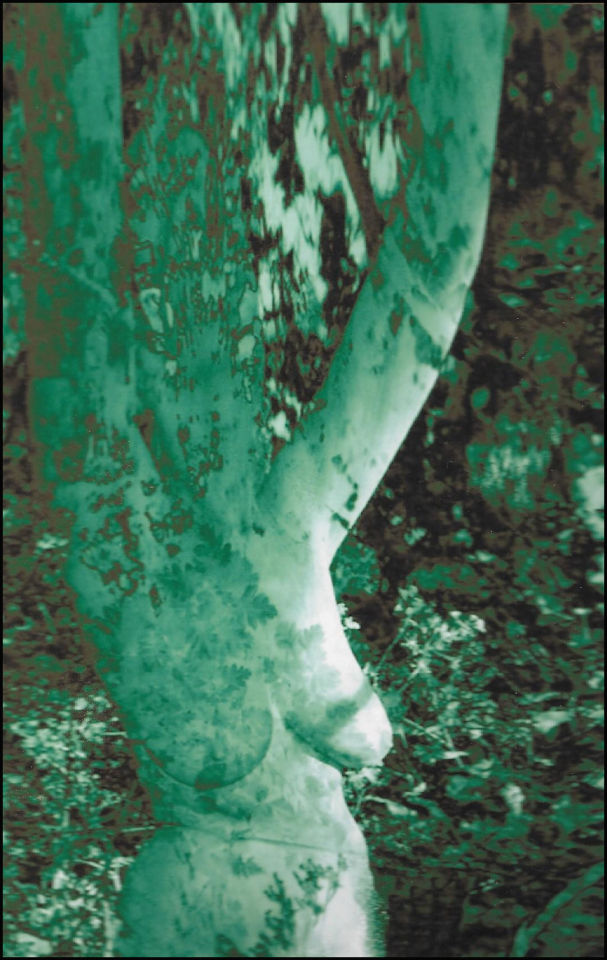
The metamorphic exhibitions
The Tokyo museum quoted its exhibition as;
“To live is to change. We change daily as our cells regenerate and we learn new things, as times change and we encounter new environments, and as we give play to our imagination.
Under the theme “transformation,” this exhibition explores the boundary between humans and non-humans. In all ages and countries, countless images and artworks have been created on the theme of transformation. Japan, in particular, is brimming with rich images on this theme, from the legends of old to the manga and anime characters of today. So, why “transformation” now? With to the spread of the Internet, the development of the global economy, advances in technology, and so on, the traditional forms “humans” take have started to become blurred, and a diversity greater than anything seen before has begun to emerge. At this exhibition, a variety of images of things that traverse the human and non-human – including animals, machines, imaginary creatures and bodies with different genetic compositions – will be unveiled through paintings, sculptures, video, archives and symposiums. Together, the “transforming” forms presented express as a single omen our hopes, dreams and fears” (Fig 2).
Fig 2
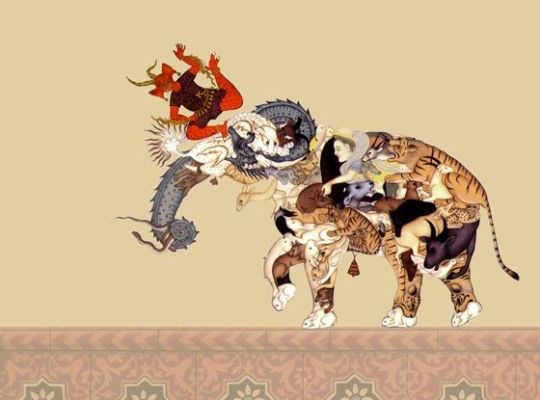
http://azito-art.com/topics/transformation-at-museum-of-contemporary-art-tokyo/
TheTransformation of Being, mounted by All Visual Arts, combined Old & Modern Masters, spanning from Albrecht Dürer to Francis Picabia, juxtaposed with the paintings, drawings and sculptures of an extraordinary collection of international contemporary artists. A selection of the works can be seen at:
http://www.allvisualarts.org/exhibitions/MetamorphosisTheTransformationofBeing/Images.aspx
The theme of the exhibition may be summarised pictorially in the following work (Fig 3). A mystery of metamorphosis is assembled in this picture. Is it the end point of a transformation, a stage in a process by which the woman emerges into the foreground or is it a snapshot of her being converted into the amorphous dark biomorphic substance looming behind her?
Fig 3
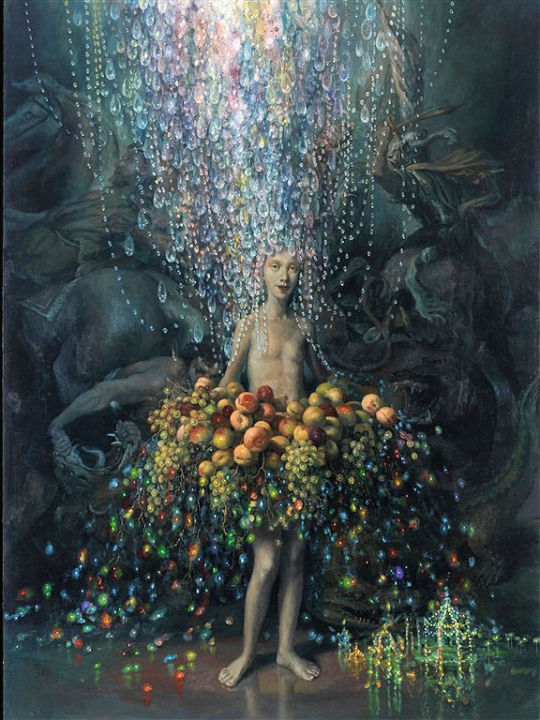
The exhibition in the National Gallery was created in collaboration with the Royal Opera House. It refers to three paintings by Titian depicting stories from Ovid’s poem. Diana and Callisto shows Diana casting out the pregnant nymph Callisto from her company. Diana and Actaeon depicts the young Actaeon out hunting and stumbling into a sacred grotto where Diana and her nymphs are bathing; and in The Death of Actaeon, we see the goddess exacting vengeance on the intruder by turning him into a stag to be torn to pieces by his own hounds.These works were the catalyst for an ambitious project involving the production of three new ballets inspired by the paintings. The costumes and sets were designed by contemporary artists – Mark Wallinger, Conrad Shawcross and Chris Ofili – who showed their designs alongside other work produced in response to Titian’s masterpieces.
Ofili chose to go to the source for inspiration. In Ovid’s epic poem, he discovered a magical realm full of passion and desire, which he conjures with psychedelic rivers of vivid colour and peopled with mythic beings such as nymphs and goddesses, stags and soothsayers. The compositional echoes are not of Titian so much as Gauguin, Picasso and Matisse, and of Japanese prints and Aubrey Beardsley’s erotica. Ofili uses these borrowings to make a unique magical brew which reveal their secrets to the viewer slowly because you sense the artist is exploring new ideas and developing new ways of working.
One of Ofili’s paintings, Ovid-Desire (Fig 4), depicts a process of multiple transformation involving a couple dancing; he wears a spangled suit, she is half naked in a dress layered with flesh pink flounces dusted with a sheen of silver. The floor, is a shifting stage patterned with emphatic diamonds, leading up to a turquoise wall and a window looking onto an Edenic landscape where naked women (Diana and her nymphs, perhaps) cavort beneath a crescent moon.
Fig 4

https://www.theartsdesk.com/visual-arts/metamorphosis-titian-2012-national-gallery
This painting highlights the aim of transformation in works of art which is to blend several pictures reaĺ or in the mind into one.
Surrealist abstraction
The procedure whereby two or more pictures are combined into one has been called surrealist abstraction. This process of fusion is illustrated in Figs 4-6. It involves ‘photoshopping’ two pictures (Figs 5 & 6), transforming them, with the help of Topaz Labs filters, into a third (Fig 7).
Fig 5
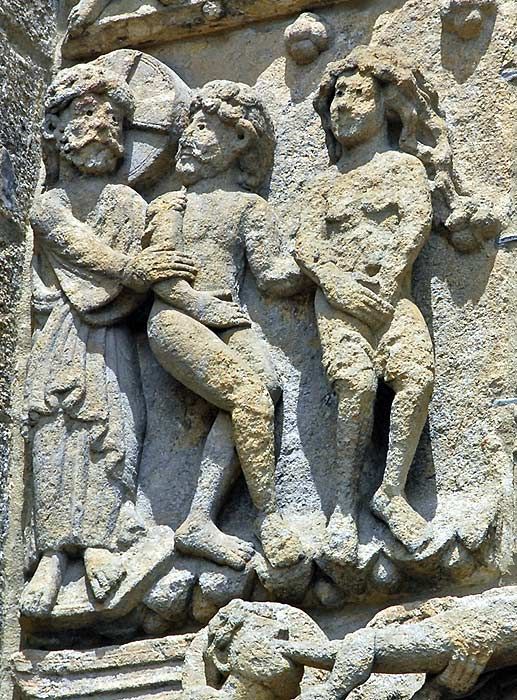
Fig 6

Fig 7
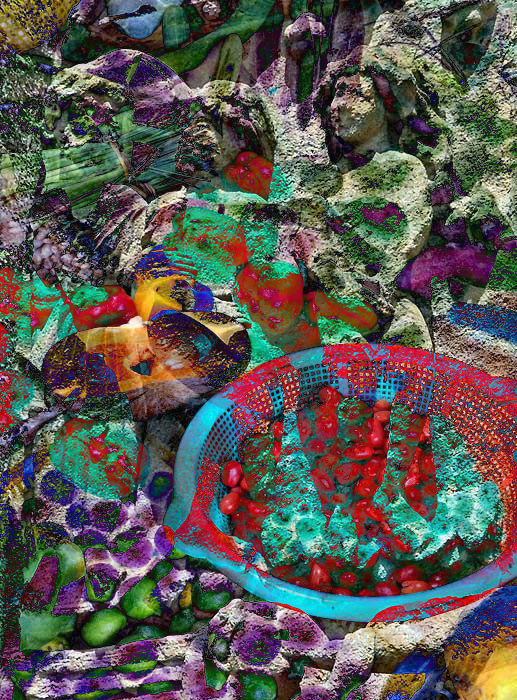
The third picture is semiabstract and has a life and meaning of its own within the viewer’s innerness. It embeds Adam and Eve’s expulsion from The Garden of Eden into our present society where the purpose of a supermarket economy is to maximize consumption. It references the Christian Bible, Genesis 2:15, which explains God’s purpose for how humankind should use Earth’s resources in ways that preserve them. The biblical reasons for stewardship are reinforced and continued from there in many ways throughout the scriptures. They imply good stewardship that avoids the devastation and loss of soil fertility that occurs in much agriculture today. However, there is no doubt that persuasive and influential misinterpretation of Christian doctrine has led to environmental destruction and lack of respect for nature.
In this transformation the representations of two material features of ‘outerness’ are metamorphosed into one representation of ‘innerness’.
Innerness and outerness
According to Ralph Rowbottam, outerness is what can be objectively observed, inspected, weighed, measured, cut into. Thus, the stone carving of The Expulsion and the display of a variety of edible plant products, express outerness. As regards ourselves , outerness includes our skin, bones, hearts, brains and so forth. Innerness is our subjectivity, whatever we feel, think, imagine: our experience, our consciousness, our inner landscape. Every human being has these two sides. So presumably do animals. Rowbottam says that perhaps even plants or stones have some sort of innerness, though infinitesimal in development compared to our own.
The transformation has produced a semi abstract image that is far richer in content and open to many avenues of interpretation.
Abstraction through transformation departs from the evaluation of a picture through its outer objectivity. This departure from accurate representation can be only slight, or it can be partial, or it can be complete. Abstraction exists along a continuum but always evokes an inner subjective response. In this context, transformation does not attempt to represent an accurate depiction of a visual reality but instead relies on shapes, colours, forms and gestural marks to achieve its effect.
Music is an abstract creation. Beethoven described his innerness when creating a new work. “....In my head, I begin to elaborate the work in its breadth, its narrowness, its height, and its depth, and as I am aware of what I want to do, the underlying idea never deserts me. It rides, it grows up. I hear and see the image in front of me from every angle, as if it had been cast…”
How does a listener or a viewer come to an understanding of an abstract work of art? As was said by a person viewing a Rembrandt, “although the image clearly makes sense as a whole, what sense it makes cannot be easily decided”. Maybe the mental process involved in trying to make sense of an abstract painting follows a kind of reverse of Beethoven’s creative pathway by first discerning significant shapes and forms in the mind which are then retrofitted to create an underlying personal idea that enhances a person’s innerness..
Both the gallery and the artwork function as interfaces to the larger systems of meanings, values, and social relations that make pictorial systems possible and interpretable. Members of communities and cultures that visit an art exhibit without prior knowledge of the style or period can be left without information that will lead to connecting the dots of interpretation. In this context the story attached to Fig 6 is only readable because the viewer is given access to the two images that were fused to make it. With no information about the elements of outerness that were fused to produce Fig 8 the viewer has to fully accept the fact that they are working outside the realm of answers and explanations. What is actually seen is in the mind of the beholder. Evaluation comes down to answering the question : would you like to see it in your house everyday?
As always, Picasso has the last word.
“Everyone wants to understand abstract art. Why not try to understand the song of a bird? …people who try to explain pictures are usually barking up the wrong tree.”
Fig 8
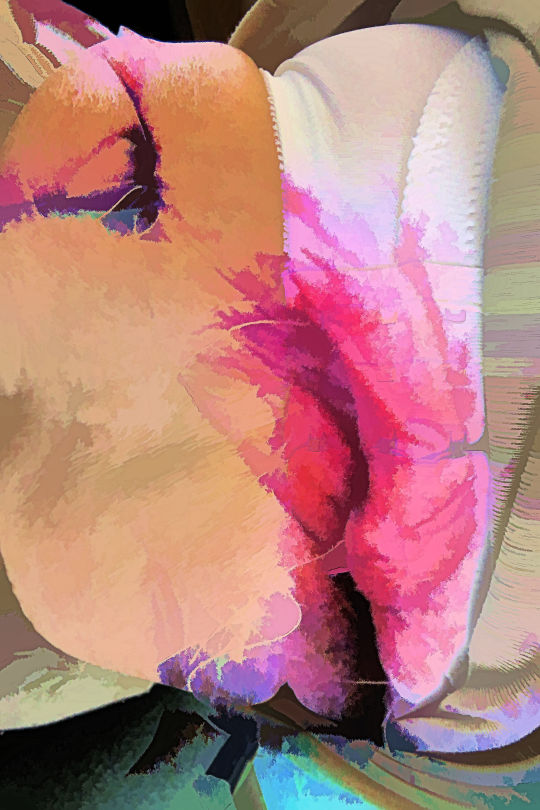
Go to Zygeena’s Pinterest Board to see a growing gallery of digital transformations.
https://pin.it/wze23swivsibns
Go to a Google Doc version of this blog
https://docs.google.com/document/d/1u8se74Rx2-PU7dlp9h6t0i_77XAwChGKHp0vfDDxHkg/edit?usp=sharing
0 notes